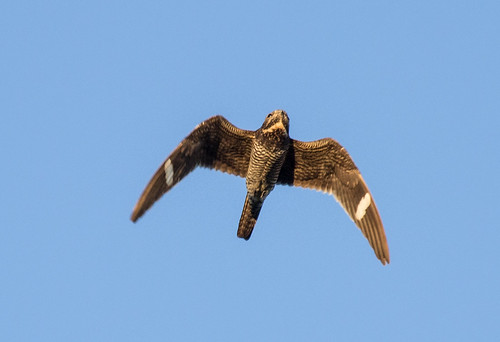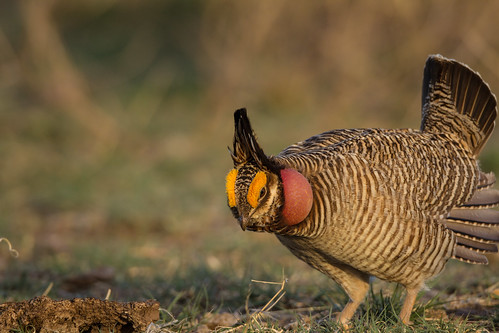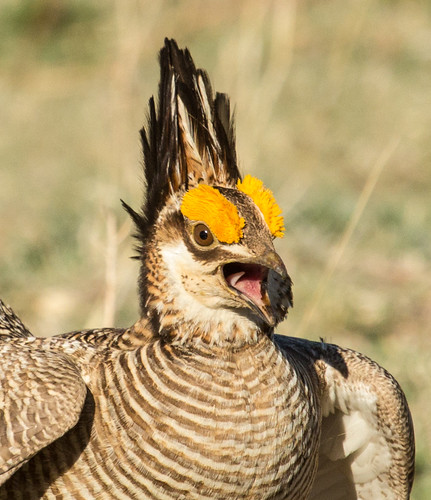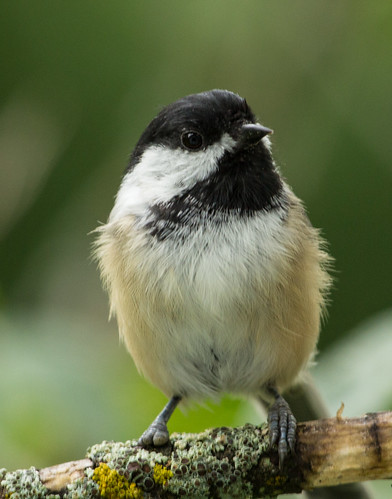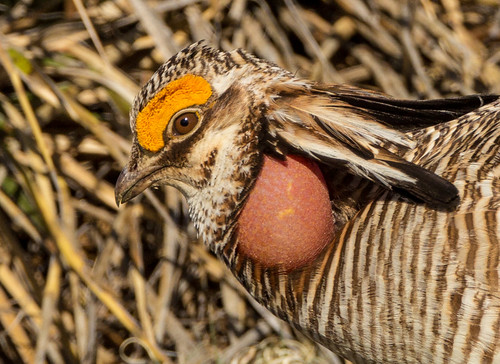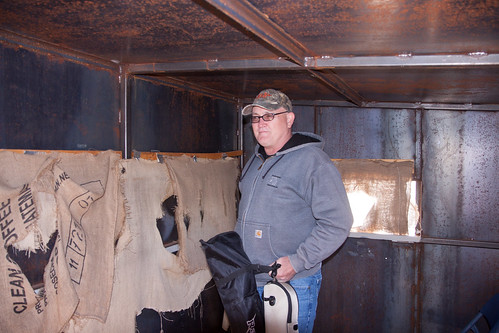Book Review: Feeding
Wild Birds in America: Culture, Commerce & Conservation by Paul J.
Baicich, Margaret A. Barker, and Carrol L. Henderson, published by Texas
A&M University Press, College Station, Texas, 2015.
This spring, I
was sent a copy of a new book about bird feeding, written by two authors I know
personally and respect deeply—Minnesota’s own Carrol Henderson, who has directed our DNR’s
Non-Game Wildlife Program from its inception and is the author of the most
comprehensive book about bird feeding I’ve ever seen, Wild About Birds: The DNR Bird Feeding Guide; and Paul Baicich, one
of the most respected conservationists of our time. The third author, Margaret
Barker, was a coordinator for Project FeederWatch at the Cornell Lab
of Ornithology before my time at the Lab as Science Editor, so
I’ve never personally met her. All three authors have written multiple books and are well regarded by many.
There are lots of books out about bird feeding, and Carrol
Henderson’s Wild about Birds in particular is so excellent that my first thought was we don’t
really need any more books about it. My second thought was that Wild about Birds is now 20 years old,
and we do have more information about some issues than we did in 1995, perhaps
most importantly regarding hummingbird feeding. And my third thought was that I knew this book was going to cover the history of bird feeding, about which Henderson and Baicich are genuine authorities. So I was excited when I learned about it.
The book does a simply superb job of covering the history of bird feeding through the 20th century, even if it leaves out my favorite nineteenth century indirect reference to it, in Emily Dickinson's poem, Hope Is the Thing with Feathers:
“Hope” is the thing with feathers -
That perches in the soul -
And sings the tune without the words -
And never stops - at all -
And sweetest - in the Gale - is heard -
And sore must be the storm -
That could abash the little Bird
That kept so many warm -
I’ve heard it in the chillest land -
And on the strangest Sea -
Yet - never - in Extremity,
It asked a crumb - of me.
They did make several references to Thoreau and provided a wonderfully comprehensive history that explains how bird feeding evolved from such a quiet, simple little activity into what is now a multibillion-dollar industry, with wonderful discussions of such cool things as Field and Stream magazine focusing on backyard bird conservation. The historical information in the book is invaluable. I wish the authors had done as thorough a job with their coverage of some important commerce and conservation issues for the current millennium.
What the book leaves out
The nature of any lucrative industry is to maximize profits and minimize expenses. With many products, consumers are savvy enough, and government regulations strong enough, that bad products are quickly driven off the market. In the wild bird industry, there is no governmental oversight whatsoever, and few consumers are aware of many issues involved in attracting backyard birds. The industry is under no legal obligation to ensure in any way that the products they sell are good for birds--they're not even required to ensure that their products won't out-and-out harm them. The book's chapter, "Bird Feeding in the Twenty-First Century" says that in 2012, "the amount spent for bird feeders, birdbaths, and nest boxes had increased to $969.7 million" without one word about how crappy some of these products are. Metal bird houses ostensibly designed for wrens and chickadees, but which would cook or freeze eggs or nestlings if the birds actually used them, are sold because many consumers don't know any better and there is no one to develop "building codes" based on the kinds of safety regulations that keep houses and baby cribs safe. (I quit a job working for an optics company when they sold out to a corporation that was selling exactly this kind of dangerous bird houses.) A great many of these products are manufactured in China. Prices are kept down and profits up in part because of China's lax environmental regulations, and in part because the container ships that carry them here are fueled by cheap but highly toxic bunker fuel. No matter how you look at it, getting products from China is harming the air and water that wild birds depend on.
Of course, the book isn't so much concerned with those kinds of products as they are with wild bird food, which took in $4 billion in 2012. Even as they tout that figure, the authors skip important issues about how that money is generated.
Aflatoxins in corn and peanuts
For example, federal law requires corn and peanuts sold for human, pet, or livestock consumption to be tested for dangerous aflatoxins produced by mold, but have absolutely no requirements that corn or peanuts sold for wildlife consumption be tested. When corn or peanuts are found to be contaminated, there is not even anything prohibiting companies from simply repackaging it and selling it as bird food! Most people aren't aware of how dangerous aflatoxins are, or how the molds that cause them flourish in corn and peanuts, because this is one of those fundamental issues that federal safety regulations have long protected us from. According to the
Wild Bird Feeding Institute's own website,
Research conducted by Dr. Scott Henke of Texas A&M University Kingsville found that 17% of the birdseed samples tested in Texas contained relatively large amounts of the toxin. His research further suggests that feeding wild birds foods contaminated with aflatoxin can be harmful.
The Institute doesn't question the accuracy of Henke's finding, but all their recommendations for dealing with the problem put the onus on the consumer: their aflatoxins information page includes a relatively lame "consider avoiding seed mixes containing corn and peanuts, as the Aspergillus fungi are most likely to grow on these food items," after obfuscating the issue by first listing eight other recommendations, including keeping cats indoors and making windows safe for birds! Those are important points to be sure, but utterly unrelated to aflatoxins. The institute does make good points about seed storage, but those are only useful if the seed isn't contaminated to begin with. And despite their awareness of the issue, the industry continues produce, package, and distribute corn and peanut products without testing them or guaranteeing to consumers that they are safe for birds.
Feeding Wild Birds in America quotes the Wild Bird Feeding Institute a lot, but almost always favorably, and never once mentions this issue. The Red-bellied Woodpecker on the cover, feeding on an ear of corn, seems a clear endorsement of offering corn without mentioning its particular vulnerability to aflatoxins. Of course, most corn really is perfectly safe. But we can’t know how safe the corn we're buying is as long as corn isn't tested at all for wildlife feeding. I caution people to purchase peanuts in bulk from grocery stores and corn from livestock feed stores until the bird feeding industry starts testing products for aflatoxins.
Hummingbird feeding
Since Wild about Birds came out in 1995, we've learned a lot about how harmful red
food coloring is, even as red dyes are still used in commercial hummingbird nectar
mixtures. The industry still keeps claiming that no studies conclusively prove that red dye causes cancer or death in hummers. The trick is, even if the
corporations that sell the dyes and commercial nectars were willing to fund
such studies, permits to conduct the laboratory work would be virtually impossible
to obtain because that kind of research would necessarily kill hummingbirds, and so is
prohibited by the Migratory Bird Treaty Act. Human food and drug testing isn't done on humans, either--it is lab studies on rats and mice that lead to guidelines about what is safe to consume. And based on this kind of research, we know darned well that red dyes absolutely do not belong in hummingbird nectar. But despite a long section about the popularity of hummingbird feeding, the book makes no mention of this important issue.
When I was a licensed bird rehabber, I noticed that when someone brought me a hummingbird that had been feeding on sugar water with red dye, it took 36 hours or more for the dye to disappear from their droppings. Julie Zickefoose, a well-known bird rehabber as well as writer, has
written about the same phenomenon, and done a lot of research into the issue. A 2001 study on laboratory mice by Tsuda in Japan published in
Toxicological Sciences found that relatively low doses of Red #40, the world's most popular food coloring, caused pre-cancerous DNA damage in the colons of mice. Hummingbird bander David Patton tracked one banded, color-marked hummingbird to learn that that individual took about 10 grams of sugar water from one feeder each day, along with the other, natural food sources in his diet. Had that feeder been filled with a popular commercial hummingbird nectar mix, properly mixed with water according to the instructions, the tiny bird would have ingested more than 15 times the amount, for its size, that the World Health Organization recommends as a daily limit for humans. And the nectar taken from a single feeder would give the hummingbird 12 times the amount of red dye shown in that 2011 study to cause DNA damage in mice.
Julie compiled all this information and has been doing her best to publicize the dangers of red dye in commercial hummingbird mixtures--dangers that are not offset by any good whatsoever. The index of Feeding Wild Birds lists her on three pages specifically regarding hummingbirds, but I can’t find anything mentioning her on those pages.
Sheri Williamson is an acknowledged authority on hummingbirds; among other things, she bands them and is the author of A Field Guide to Hummingbirds of North America in the Peterson guide series. Sheri is quoted extensively regarding some great work she's done with the hummingbird feeding industry, but not at all about how hard she's tried to persuade that very industry to get rid of the red dyes in commercial hummingbird food. Any book touting
both commerce and conservation in its title has some obligation to put the
profits of the multibillion dollar industry they’re celebrating into some
context, don't they?
Another timely issue that might have been addressed in a brand new book about bird feeding is the work on late fall and winter hummingbirds, and the value but also the
caveats of keeping feeders going for them. That is rapidly becoming part of the
culture of bird feeding (the first word in the subtitle), but no mention
was made, nor is Scott Weidensaul, a hummingbird bander who has led quite a bit
of the public education regarding vagrants in the Eastern US in winter, even
mentioned in the book.
Scotts Miracle-Gro disaster
The book discusses Global Harvest Foods's acquisition of Scotts Miracle-Gro Company’s US wild bird
food business in March 2014, I think to emphasize what a big business bird feeding has become. But as long as they were mentioning these specific giant corporations by name, shouldn't they have also mentioned that in 2012, Scotts was
fined $12.5 million dollars after birdseed they sold was discovered to be
laced with a pesticide to prevent insect damage—a pesticide specifically
labeled as unsafe for birds? Someone within the corporation had noticed the
labeling and warned that they needed to stop this, but was ignored—that was part of the
reason the penalty was so stiff. They might also have mentioned the recall of the birdseed, and how poorly it was conducted by retailers so that a great deal of the toxic seed ended up being sold.
One more dark issue
Nowhere is the book can I find any mention the millions of Red-winged Blackbirds
poisoned every year in western Minnesota and the Dakotas, with permitting from
the US Department of Agriculture, to appease farmers growing sunflower seeds.
The one mention of the dark side of the Wild Bird Feeding Institute
The book does cover one negative about the Wild Bird Feeding Institute, mentioning that it fought against the Teaming with Wildlife effort of the 1990s that was trying to create a system comparable to the Pittman-Robertson Federal Aid in Wildlife Restoration Act of 1937. That act imposes an 11 percent excise tax on all firearms and ammunition, earmarked for game species conservation. The Teaming with Wildlife project, which was fought for by Paul Baicich--that's how I learned about him in the first place--was hoping for much less. They were asking for a similar fee on birding optics, birdseed, bird feeders, etc. that would never be allowed to exceed 5 percent--less than half of what Pittman-Robertson collects--to go for non-game wildlife protection. Unfortunately, the birding community was no more cooperative than the bird feeding industry, and without a united front by our own community, it was impossible to persuade a Congress that, at the time, was obsessed with the "no new taxes" mantra. Some people complained that binoculars are used for a lot more than birding, but guns and ammo are used for a lot more than hunting. In a real sense, muggers and terrorists contribute more to conservation than birders are obliged to. I was one of the conservationists sorely disappointed to see the Teaming with Wildlife effort fail.
In sum
If you want to focus on the history
of bird feeding through the 20th century, Feeding Wild Birds in
America: Culture, Commerce & Conservation covers that beautifully. If you’re interested in a comprehensive book about how to feed birds, Carrol Henderson’s Wild about Birds is still the best we have, and all the earnings directly benefit the Minnesota Non-Game Wildlife Program. If you want to learn about the culture of bird feeding today, check
out the many magazines focused on that, or blogs by people like Julie Zickefoose, and Sharon Stiteler (Birdchick). Go to Lanny Chambers's hummingbirds.net site to get up-to-date information about hummingbird feeding.
I hate writing negative reviews about bird books—there are too many good books out there that get short shrift, so why focus on ones I didn't like? And it’s of course possible when I dislike a book that I’m missing some excellent quality that makes it much better than I realize. And I didn't dislike this book--it did a wonderful job of covering the history of bird feeding. If they'd titled it Feeding Wild Birds in America: a History, I'd have given it a glowing review. But when such an authoritative, respected group of people write a book focusing specifically on the commerce of the bird feeding industry, I expect it to be more than a corporate fluff piece. The only way we can force bird food producers, distributors, and retailers to guarantee their products are safe for birds will be for consumers and the government to press them--otherwise, the multibillion dollar industry holds all the cards.
I know I'm too much of a socialist to be fair about some of the issues. These three authors aren't plagued by my Irish temper and my unwillingness to temper my words when bird lives are at stake. I am a devoted bird feeder myself, and know how valuable bird feeding is, for people's enjoyment and because it is the only connection millions of people have with the natural world nowadays. It should be equally valuable for birds. If this book had presented a balanced and clear-eyed look at the problems as well as the wonderful elements of bird feeding, it could have done a world of good in helping to alleviate those very problems by educating consumers and pressuring the industry both.
Bill Thompson Jr. wrote that we've reached saturation in the genre of bird feeding books. I think we could have used one more book on the subject--one that thoroughly covers the issues involved with bird feeding in America--the culture, commerce, and conservation. Sadly, I'm still waiting.










